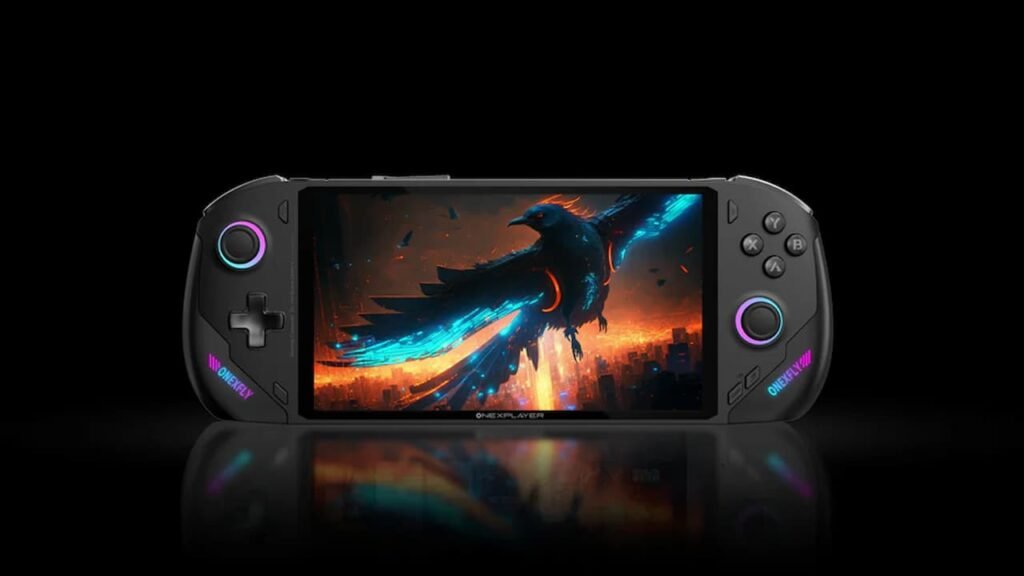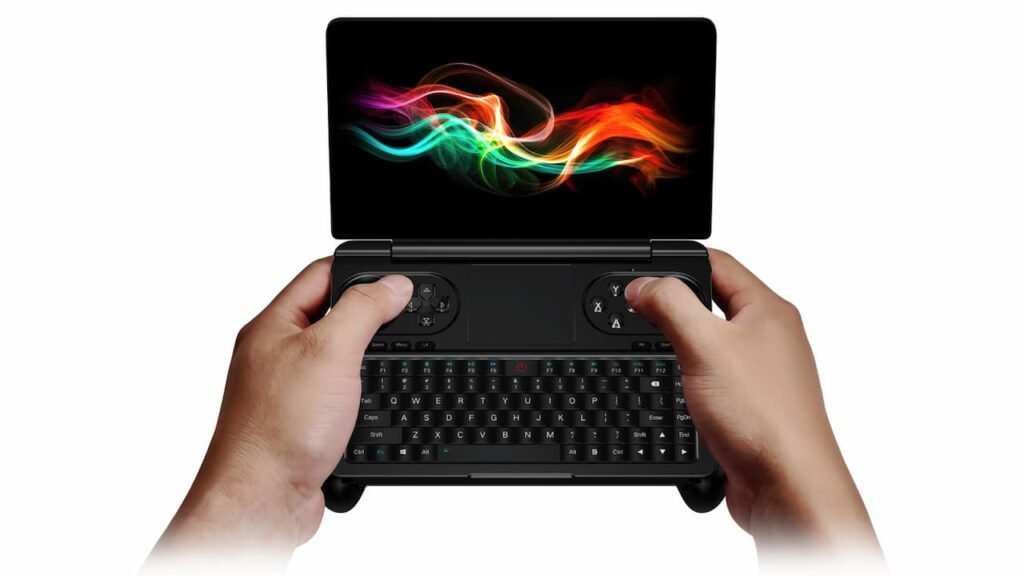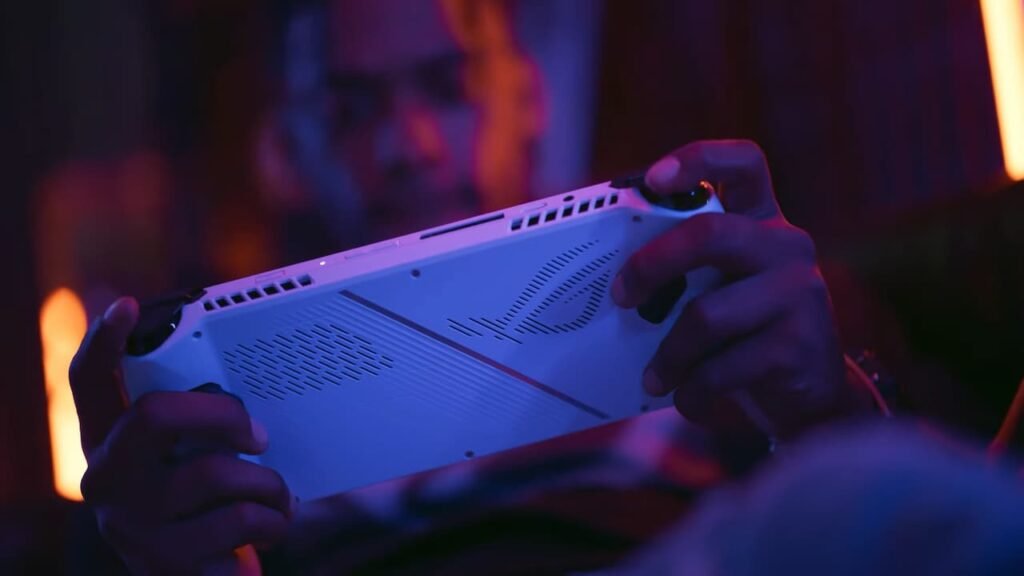With the release (and overwhelming popularity) of the Steam Deck, handheld gaming PCs have entered into a renaissance of sorts, with multiple brands emerging as competitors.
The likes of the ROG Ally, MSI Claw, and hordes of Ayaneo/OneXPlayer devices have brought with them very impressive specs, along with a new-found innovation in the handheld gaming space.
Most potential buyers are now spoilt for choice, and understandably confused on which handheld to ultimately pick for themselves.
You can find 7 such recommended handheld gaming PCs below, sorted from top to bottom in terms of overall features, usability, and ease of use.
7 of the best handheld gaming PCs you should not sleep on in 2025
7) GPD Win 4

Perhaps one of the more unique handheld gaming PCs in this list, the GPD Win 4 is a throwback to the days of the PlayStation Portable (specifically, the PSP GO). Like Go, the GPD Win 4 features a slide out design – complete with a fully functional keyboard.
In terms of horsepower, it’s no slouch either, and comes equipped with the newest AMD Ryzen APUs with 32+ GB of RAM, and starts at a competitive price of $799.
The Win 4 also comes equipped with an Oculink port – making it ideal for eGPU solutions.
Pros
- Very powerful, compact handheld PC with a unique form factor.
- Provides USB 4 and Oculink support.
Cons
- Aftermarket support can be worse than well established rivals such as ASUS.
- The form factor may be unappealing for some.
| Product | Link |
|---|---|
| GPD Win 4 – For US, Canada and Others | Purchase from Amazon |
6) OneXFly F1 Pro

Undoubtedly the most premium handheld in this list, the OneXFly F1 Pro comes with a price tag to match it as well. To be clear, we are talking about the AMD Ryzen Ai 9 HX 370 model here, with 32 GB of RAM – coming in at a rather staggering $1499.
The handheld has all the bells and whistles you’d expect, including a 7-inch 144 Hz OLED display, which really makes everything pop. It’s also the only handheld within this list to offer class-leading performance with an OLED display.
Pros:
- Beautiful OLED display with hall-effect triggers and sticks.
- The HX 370 can play pretty much any game you throw at it.
Cons:
- Expensive, and probably overkill for most.
- Availability and long-term support is a serious concern.
| Product | Link |
|---|---|
| OneXFly F1 Pro – For US, Canada and Others | Purchase from Amazon |
5) GPD Win Mini (2025)

Yet another entry from GPD in this list, the Win Mini resembles a mini laptop of sorts. Despite its small, unassuming nature, the Win Mini is powered by the newest Ryzen AI Max series of APUs (specifically, the AI 9 HX 370), and is a beast for handheld gaming.
The device also comes equipped with two analog sticks (which are hall effect), a fully functional keyboard and shoulder buttons that make it very easy to control and navigate through in Windows 11.
The device also comes equipped with an Oculink port for eGPU support, as well as a 120 Hz, VRR-capable 1080p display.
Pros
- Compact, clamshell like form factor.
- Fully functional keyboard.
Cons
- Availability and product support may be of concern.
| Product | Link |
|---|---|
| GPD Win Mini 2025 – For US, Canada and Others | Purchase from Amazon |
4) MSI Claw

Representing Intel’s re-entry into the handheld gaming PC space, the MSI Claw borrows a lot from the ROG Ally, opting to blend in some Intel Arc magic instead. It is also the only handheld in this list to use an Intel solution – for better or worse.
The MSI Claw possesses a beautiful 120 Hz IPS display that is capable of VRR, along with a hefty 53 Whr battery.
Coupled with an Intel Core Ultra 7 155H, the Claw is a beast that can deliver stunning visuals with great battery life.
Pros:
- Sleek design and is very comfortable to hold.
- A beautiful VRR-capable 1080p display.
Cons:
- Despite its massive capacity, it is not as efficient battery-wise compared to the Steam Deck OLED.
- Intel Arc drivers need time to mature and are quite underwhelming as of now.
| Product | Link |
|---|---|
| MSI Claw – For Indian Region | Purchase from Amazon |
| MSI Claw – For US, Canada, and Others | Purchase from Amazon |
3) Lenovo Legion Go

The Lenovo Legion Go is one of the more unique handheld gaming PCs on this list. It boasts a massive 8.8-inch QHD (1600p) 144 Hz display, along with detachable controllers, much akin to a Nintendo Switch’s Joy-Cons.
The device can double up as a Windows tablet and is incredibly capable thanks to its usage of the AMD Ryzen Z1 Extreme processor, coupled with 16 GB of super-fast LPDDR5X RAM.
The handheld also boasts a whopping 50 Wh battery and a perfectly capable trackpad that makes it all the more reliable.
Pros:
- Large, crisp QHD display with plenty of buttons to control the device.
- One of the most powerful handhelds on the market thanks to the Z1E APU.
Cons:
- There is a lack of VRR in the display, along with less-than-ideal Lenovo Legion Space software.
- Bit too unwieldy for a handheld, weighing over 800 grams.
| Product | Link |
|---|---|
| Lenovo Legion GO – For US, Canada, and Others | Purchase from Amazon |
2) Asus ROG Ally/ROG Ally X

Often dubbed as the true King of Windows-based handhelds, the Asus ROG Ally is a beast in terms of raw performance.
The Ally comes equipped with the Ryzen Z1 Extreme, the same APU as the Lenovo Legion Go, but with an overall better software experience that extends into drivers as well.
The Ally is also a rather “compact” handheld, boasting a reasonable weight of 608 grams. Paired with an impressive 7-inch VRR-capable IPS panel, games look and run amazingly well on the handheld.
The refreshed Ally X offers the same Ryzen Z1 Extreme APU, but with added benefits such as 24 GB of total system memory as well as an upgraded 80 Whr battery. If you can afford it, it likely is the best Windows-based handheld gaming PC on the market currently – at least in terms of OEM support.
Pros:
- It is undoubtedly the best Windows-based handheld in the market to date, with a clean, polished UI and impressive raw performance.
- Absolutely stunning speakers with an impressive sound stage.
Cons:
- Battery life could be better and limited by the 40 Wh capacity (not applicable if you’re using the ROG Ally X though!).
- Windows can be quite janky at times.
| Product | Link |
|---|---|
| ROG Ally – For Indian Region | Purchase from Amazon |
| ROG Ally – For US, Canada, and Others | Purchase from Amazon |
| ROG Ally X- For Indian Region | Purchase from Amazon |
1) Steam Deck OLED

The Steam Deck OLED is the efficiency king and arguably the best handheld gaming PC in the market right now. While the original Steam Deck was also a great product, it had a set of flaws (especially surrounding the display) that made it stick out like a sore thumb.
The OLED version solves almost all issues, while simultaneously bringing massive improvements to the battery life.
Taking into consideration the pick-up-and-play nature of the handheld (thanks to it running on Linux-based SteamOS) it very easily earns a solid recommendation and should most definitely be your first product of choice when jumping into this exciting new market.
Pros:
- Offers a console-like experience and is easy to navigate.
- The OLED display is crisp and beautiful to look at.
Cons:
- SteamOS can be limiting and does not support a lot of Windows-based games.
- Compared to the likes of the ROG Ally, the Steam Decks are quite a fair bit less powerful in comparison.
In conclusion, most newcomers would be better off sticking to the Steam Deck OLED – thanks to its ease of use and gorgeous OLED display.
Those who want a more powerful handheld can turn their attention towards the ROG Ally but should be aware of potential problems such as a failing SD Card reader and the general jankiness associated with Windows on a handheld device.
| Product | Link |
|---|---|
| Steam Deck OLED (512 GB) – For Indian Region | Purchase from Amazon |
| Steam Deck OLED (512 GB) – For US, Canada, and Others | Purchase from Amazon |
| Steam Deck OLED (1TB) – For Indian Region | Purchase from Amazon |
| Steam Deck OLED (1TB) – For US, Canada, and Others | Purchase from Amazon |
We earn a small commission if you purchase a product from the links mentioned above. You can read more about the terms of usage for our website, here.
